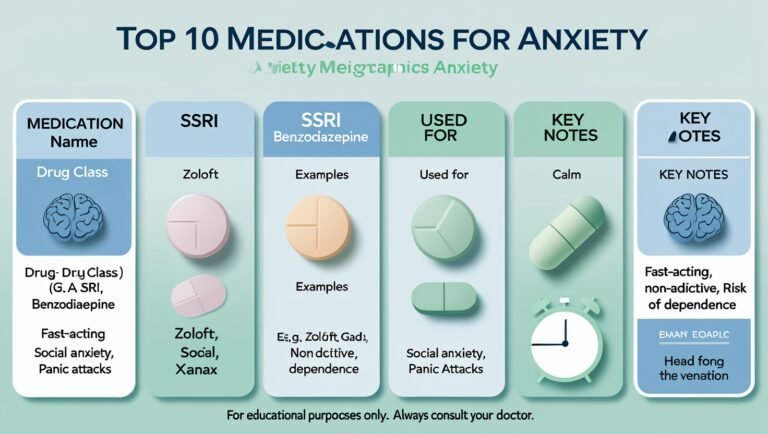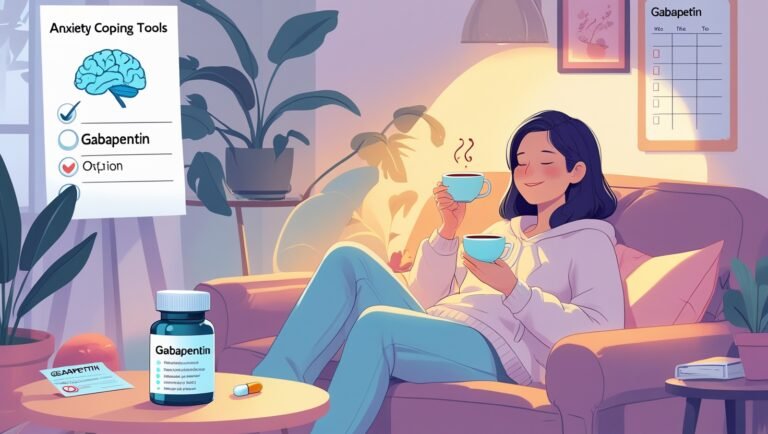The Best Time to Take Lexapro for Anxiety, Written by a Pharmacist
Lexapro (escitalopram) is an antidepressant. It belongs to a group of drugs called selective serotonin reuptake inhibitors (SSRIs). It’s one of the only that’s FDA approved to treat major depressive disorder (MDD) and generalized anxiety disorder (GAD). It is also used off-label to treat a number of other mental health conditions, including panic disorder and obsessive-compulsive disorder.
If your doctor has prescribed Lexapro for you, understanding what it is, how it works and what to look out for from treatment can help you feel more in control of your mental health. Here is some advice to get the most benefit from your medication — without the side effects.
You can take Lexapro any time of the day
Lexapro is taken once a day. You may prefer to take it in the morning or evening, depending on your lifestyle and how the medicine affects you. It’s also important to take it at approximately the same hour daily so that the amount of medication circulating in the body remains stable.
There’s no best time for everyone, but you might want to consider the potential advantages for each dosing timing:
- Morning dosing: Good because it ensures the highest level of medication in your system when you wake up. Lexapro levels peak at three to four hours after you take it by mouth.
- Taking in the evening: Pros: This can help manage side effects such as nausea or daytime drowsiness.
Talk to your doctor about your dosing schedule: If you are prescribed Lexapro by your doctors, just talk it over with him about your dosage pattern.
You may take Lexapro with or without food
Lexapro is readily absorbed when taken with or without food. That means you can take Lexapro with food, or without it — whatever is more convenient for you.
Nausea Approximately 8 to 18 percent of individuals who were taking Lexapro in early clinical studies of Lexapro. And if you are feeling nauseated from Lexapro, attempt taking it with food.
Individual Factors Influencing Timing
Timing of dosage can also be influenced by individual factors. This includes things like:
- Sleep patterns
- Work
- Social life
Cost is another factor, as is when you will remember to take it — for such a flexible medication, consulting your schedule makes sense, as does considering when to fit in another daily pill.
Related:
- Gabapentin for Anxiety: Dosing, Side Effects, and More
- Hydroxyzine for Anxiety: How It Works, Side Effects, and Dosages
- Propranolol for Anxiety: What to Know
Here’s a few things on how to remember to take Lexapro:
- Using Lexapro with other drugs
- Creating an alarm for taking your tablets
Lexapro is to be taken at the time of day that is most convenient for the person who takes the night shift, because it is necessary to ensure that the quality of the rest does not suffer. If you work nights, don’t know how Lexapro will affect your sleep. If it keeps you awake, try taking it at night; if it makes you sleepy, take the pill in the morning.
Remember that Lexapro or other SSRIs can take up to six weeks to begin to alleviate anxiety symptoms. Indeed, greater anxiety or restlessness during the first 2 weeks on Lexapro is not uncommon.
That said, if your anxiety doesn’t get better or you feel worse within a month of starting Lexapro, tell your doctor or mental health care provider about that, too. This may be a sign that you need to be on a higher dose or a different medication altogether.
It’s OK to use Lexapro at the same time as other meds
There are some drug interactions with Lexapro to be aware of. But just because you can’t take Lexapro with your other medications doesn’t mean you can’t take them all at the same time. These drug interactions are not associated with when Lexapro is taken. Instead, they have to do with the way Lexapro acts on the body.
You should even share a list of all drugs you take with your healthcare team to check for drug interactions. Possible Lexapro interactions include:
- Medications that can cause bleeding. These drugs include nonsteroidal anti-inflammatory drugs (NSAIDs) and anticoagulant or antiplatelet medicines.
- Medications that increase serotonin levels. That includes other antidepressants, such as mirtazapine (Remeron) and monoamine oxidase inhibitors (MAOIs).
- Drugs and other substances that may cause sleepiness. Since SSRIs can cause drowsiness, other drugs and substances that do the same may be risky. This applies to opioids such as oxycodone (Roxicodone, Oxycontin), to benzodiazepines such as alprazolam (Xanax), and to alcohol.
Timing change by considering side effect
Side effects of Lexapro are different from person to person and usually they have a determination as to the best time for someone to take a Form of Lexapro.
Insomnia is a frequent side-effect of Lexapro. At least 12% of individuals taking Lexapro for anxiety encounter either insomnia or daytime sleepiness. These are most likely to happen when you first start taking it, and are also likely (but not certain) to even out over time.
If you suffer from: Take it at night- Lexapro
Excessive daytime sleepiness: Some people find that they can’t take medication for their severe daytime drowsiness. Measures to control the symptom of excessive daytime sleepiness include taking no naps during the day and getting regular exercise.
Nausea: If you have nausea, try taking your medication with toast or ginger.
Other side effect that bothers daily activity
On the other hand, if Lexapro makes you drowsy, it’s better to take it in the morning. Occasionally, your provider may suggest a different medication for you to take temporarily to help you sleep during the first few weeks of Lexapro therapy.
And if you’re having trouble sleeping, consider tips for sleep hygiene that might help. These include:
- Minimizing caffeine
- Sleeping in a dark, cool space, free from screens
- Tossing in melatonin or some sleep aid stuff to your routine
If you are experiencing sexual side effects of Lexapro, such as erectile dysfunction or a low sex drive, try timing your dose well away from sex. For example, if you take Lexapro in the morning, the medication may increase your interest and ability to have sex that same evening.
If you are experiencing excessive sleepiness, insomnia or any other side effect of Lexapro that is adversely affecting your day-to-day functioning, let your health care provider know so they can help you decide whether to continue taking it or switch to something else.
Do not take more than the recommended dose of Lexapro to make up for a missed dose
If you are late for a dose of Lexapro, take it as soon as possible. But if it is almost time for your next dose, it is better to skip and take Lexapro at your regular time (and skip your missed dose).
Do not take extra medicine to make up the missed dose. That means you should never take more than one Lexapro dose at a time. If you take too much Lexapro, you may be more likely to experience side effects, and may be at risk for an accidental overdose.
Understanding Lexapro and Its Effects
Lexapro is an SSRI. Selective serotonin reuptake inhibitors (SSRIs) are first-line agents for psychiatric disorders, such as depression, anxiety, and obsessive-compulsive disorder (OCD).
Lexapro comes in tablet and oral solution form. In the U.S., it is approved for the following indications:
- GAD in adults and children 7 and older
- MDD in adult and paediatric patients at least 12 years old
- Lexapro is dosed at 10 mg to 20 mg once daily for anxiety.
Lexapro is an offshoot of another SSRI, Celexa (citalopram). Lexapro is also more effective than Celexa for mental health disorders and it has fewer side effects.”
How Lexapro works in the brain Lexapro raises levels of serotonin, a neurotransmitter in the brain. 17 Low serotonin is considered to be responsible for both depression and anxiety.
Common Lexapro side effects may include:
- Nausea
- Insomnia
- Ejaculation disorder
- Increased sweating
- Fatigue
- Drowsiness
- Decreased libido
- Dry mouth
- Headache
Don’t suddenly stop taking Lexapro
Quit taking Lexapro suddenly can adopt antidepressant discontinuation syndrome. And that’s due to the sudden decrease of serotonin and other chemicals in your brain. Symptoms typically begin a few days after you discontinue the drug and last a week or two. Typical withdrawal symptoms include:
- Flulike symptoms (fatigue, muscle aches, diarrhea)
- Headache
- Dizziness
- Nausea or vomiting
- Trouble sleeping
- Electric shock sensations
- Anxiety or feeling on edge
Always consult a doctor before stopping or reducing the dose of any medication, especially antidepressants. Your prescriber will be able to help you gradually lower your dose over a period of time using something called a “medication taper.” Tapering helps your body adjust to being without the drug, and lessens withdrawal symptoms. But, do not attempt to taper Lexapro on your own. Tapers vary from person to person and are based on your health and dose of Lexapro.
When to Contact a Medical Professional
If you’re using Lexapro to treat anxiety or depression, side effects may vary from mild to severe.
Lexapro may cause suicidal thoughts in individuals younger than 25. This is likely to occur in the first months of treatment or if there is an upward dosage adjustment.
If you or someone you know has the following symptoms while taking Lexapro, it is important to contact a doctor right away:
- Suicidal thoughts
- Acting violent or aggressive
- New or worsening depression
- New or worsening anxiety
- Panic attacks
- Irritability
- Any sudden mood or behavior changes that concern you.
Call your new doctor and somehow explain that you won’t be able to attend that first appointment, then call your old doc and make an appointment, telling them not to send a new prescription to a pharmacy unless you say to. When the two prescription amounts are about four days apart, THEN cancel the old one.
Serotonin syndrome (too much serotonin in the brain may cause an increased heart rate, sweating, or dizziness)
- Seizures
- Manic episodes (where a person’s energy is very high, very outgoing, and sometimes accompanied by risky behavior)
- Low sodium levels
- Excessive bleeding or bruising
- Vision problems
Get in touch with your doctor immediately if you do become pregnant. It’s not safe to take Lexapro if you’re pregnant or breastfeeding.
Continued care for anxiety: You will need to continue seeing your healthcare provider for follow-up visits to help manage and treat your anxiety. These appointments can be a good time to talk about your mental health, such as how things are getting better, or what might be getting in the way of your progress, and any side effects you have from treatment. Don’t hesitate to voice your concerns if something feels off. The more your healthcare providers know about how you live your life and what you want your treatment to do for you, the more they can choose specific medications and treatments to make you as healthy as possible.
Summary
Lexapro (escitalopram) is a selective serotonin reuptake inhibitor (SSRI) and is F.D.A. approved to treat both anxiety and depression. It is also sometimes used off label to treat other conditions. If you forget to take Lexapro, the best time to take it for anxiety or depression is the time you are most likely to remember. On the other hand, you can take it at the hour that best offsets any side effects. So, for instance, the best time to take Lexapro for preventing insomnia (trouble sleeping) is in the morning. You can take Lexapro on an empty stomach or with food, but if it’s giving you nausea, try taking it with food.
Like all drugs, Lexapro does have potential side effects and drug interactions to be mindful of. Discuss the risks and benefits with your doctor or pharmacist before taking Lexapro. And you might want to offer them a list of all medications you’re on, so they can check for drug interactions.






